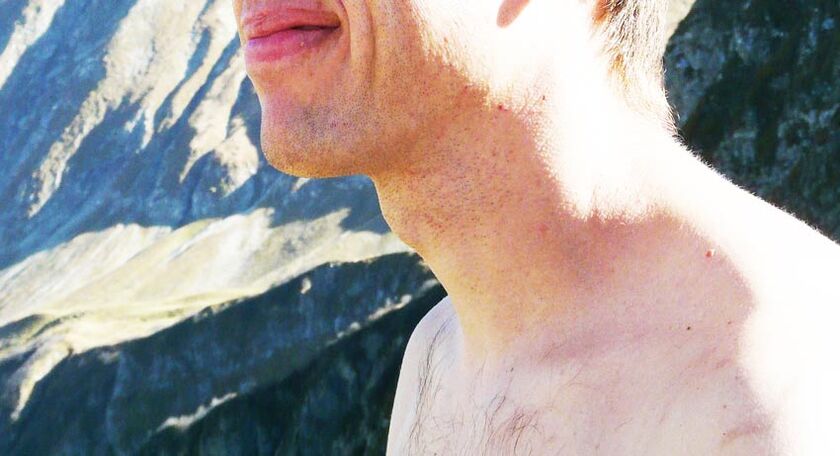
Cervical spinal osteochondrosis is well known and well studied.Currently, most working people suffer from the disease.This type of osteochondrosis not only develops in the adult population, but is quite frequent in adolescents, juvenile osteochondrosis.
The cervical department is the most portable part of the spine, so the burden in this department is quite large.The disease develops gradually, characterized by frequent improvements, which can lead to a significant decrease in the quality of life of the patient.
Cause
The causes of the disease, as a rule, are several and can depend on the age of the patient.We highlight the most frequent:
- violations of calcium-phosphorus exchange of any etiology;
- various traumatic back damage;
- Unbalanced load on the spine (hypodynamia or otherwise enhanced load);
- diseases of the cardiovascular system;
- congenital defects of the spine;
- Posture changes, including scoliotic types;
- disruption of blood circulation, leading to the deterioration of intervertebral disc power;
- Dystrophic violations related to bone tissue.
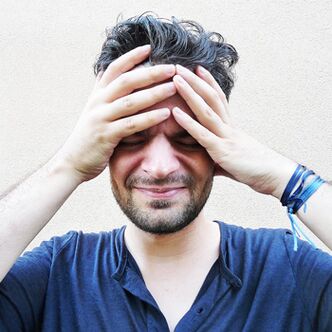
In adolescence, the main cause of disease development is trauma, not a balanced physical activity (training process).In older patients, the main cause is a long normal position during labor activity, hormone background violations.
Additional predisposing factors in the development of the disease can be:
- descendants;
- hypothermia;
- poor or not fully treated osteochondrosis;
- Stressful situations and hard work.
Osteochondrosis develops gradually.Someone, always playing sports, may not guess what is subject to the disease.
Mostly, this condition is found in people over twenty -five years old.Cervical spinal osteochondrosis is characterized by the fact that the process develops from the top.However, if you do not receive medical treatment, the process gradually affects the lower segment of the spinal column.
Symptoms of cervical spinal osteochondrosis in adults and children
As the disease has developed for years, in many cases the process is not symptomatic.Sometimes it occurs by chance, according to the radiological image, the early signs of the disease can be determined, while the complaint will be active.Keep in mind that older patients, more diverse complaints he will convey.
The main complaints with cervical osteochondrosis are:
- Frequent headaches and dizziness;
- numbness at the fingertips and weakness in the hand;
- Vegetative manifestations;
- increase blood pressure;
- discomfort for movement in the neck;
- persistent pain or persistent pain throughout the spine;
- frequent myosites from the neck muscles;
- Posture changes;
- restrictions in head movements;
- In addition, the forced position of the head can grow;
- noise in the ear;
- weather dependence;
- Crunch on the neck during movement;
- Sleep violations.
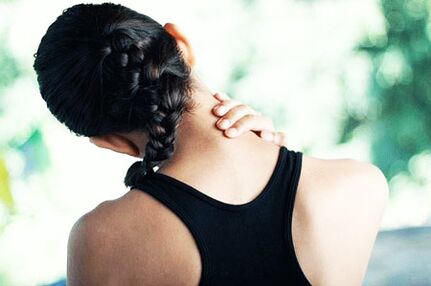
These are the most common symptoms that patients can convey.Unfortunately, the process may start with youth, and teenagers will submit the complaint.
Usually these symptoms are shown together.Cervical spinal osteochondrosis continues with episodes of exacerbation and remision.This is due to the effects of the body -provoking factors.We must not forget that if the same diagnosis is made, recovery therapy and recovery courses must be carried out every six months to avoid acute periods.
Given the main causes of the development of the disease to be reduced by trophic intervertebral discs, and adequate lack of therapy, the process may end in the formation of intervertebral hernia.
Complaints and clinical pictures of the disease - photos
Vascular manifestations in the form of dizziness or headaches are increasing when performing basic motor duties (tilt or head on).In the aggregate of all complaints, patients try to take a forced position to reduce symptoms, which exacerbates the intervertebral disc nutrition.
It is a complaint that most often encourages patients to see a doctor.If you do not perform the treatment, the complaints will be intensified and have a more persistent nature, that is, they will not pass on their own.
Pain with cervical osteochondrosis, as a rule, persistent, pain, burning character.The disease can be accompanied by periodic "bastard", provoked by sharp movements.
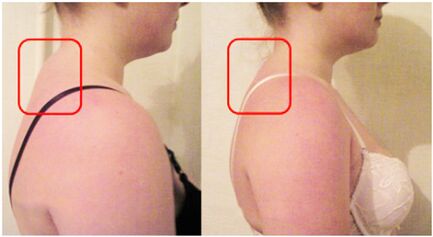
Increased blood pressure on the background of osteochondrosis encourages patients to be examined by a therapist.If you do not perform timely treatment, increased blood pressure will be constant, which contributes to the development of secondary hypertension.In this situation, the correct history is very important.
When the process is localized in the cervical region, unpleasant sensations are spread to the posterior surface of the neck, the constant tension of the bone muscle system helps limit the movement and formation of forced head position.
Pain with cervical osteochondrosis is accompanied by impaired sensitivity.Due to persistent discomfort, the muscle roller gradually forms on the shoulder, the patient is unpleasant in this area.
In addition to persistent discomfort, the patient may experience sharp pain and shooting around the neck.The occurrence of such complaints indicates that the patient should provide a complete rest to reduce pain.In some cases, the pain is so severe that one is unable to take the simplest action (turn his head, take a long breath, straighten his back).In all cases, the patient should examine the doctor, and confirm the diagnosis of osteochondrosis.
Changing the background of hormones also plays an important role in the development of cervical disease.Therefore, competent -selected physical activity will reduce general clinical symptoms and relieve the patient's condition.Because the pain in the neck is always worried, secondary sleep disorders occur.It is difficult for a person to take an easy position in the bed, anxiety, which leads to psycho-emotional stress.
In addition, patients pay attention to sensitivity.Describe them as "goosebumps" felt at the fingertips.In some cases, unpleasant sensations can be localized throughout the hands, muscle strength decreases.
Diagnosis of a disease
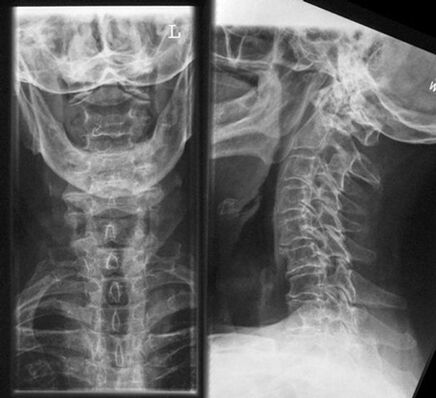
It is difficult to make a diagnosis based on one examination.Basically, the following steps are taken to explain the diagnosis:
- Comprehensive complaint collection;
- specialist consultations (cardiologists, endocrinologists, neurologists);
- X -ray cervical spinal examination;
- Magnetic resonance tomography.
Specialized doctor examination is necessary to exclude acute conditions of cardiological profiles and others.With the exception of acute somatic pathology, we can talk about the diagnosis of osteochondrosis.In addition to general clinical manifestations, the diagnosis can be confirmed using the spinal x -Ray examination.
X -Ray is the most affordable and continuous study that helps create a diagnosis.In the picture, you can see the narrowing of the space between the vertebrae, which shows the intervertebral disc distribution.Along the edge of the vertebra, bone growth can be distinguished.If osteochondrosis is complicated by instability in the cervical region, then X -ray can be observed by relative vertebral displacement with each other.
Cervical spinal osteochondrosis is a radiological disease that shows which area is most damaged.Even when examining a cervical segment, one can see that the process is not as common.
In very complex cases, magnetic resonance tomography is performed, which helps to diagnose complications of osteochondrosis-intervertebral hernia.Thanks to the MRI image -By -layer layer, even the minimum hernia and immediately indicates the degree of damage.
Treatment of cervical spinal osteochondrosis
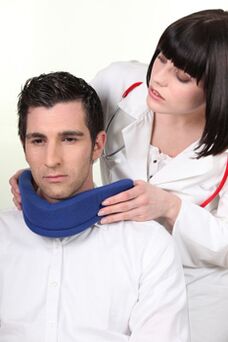
Only a doctor knows how to treat cervical osteochondrosis during the acute period and intervention.Therapy, prescribed for this condition, should be complex.When it exacerbates the disease, it includes:
- medicines;
- Complex recovery therapy (physiotherapy, gymnastics, massage, acupuncture, manual therapy);
- Physiotherapy (electrophoresis, UHF, magnetotherapy, laser therapy);
To prevent the severity of osteochondrosis, they use:
- sanatorium-resort treatment;
- People's Medicine;
- wear special wraps and corsets;
- Lifestyle changes (weight loss, balanced physical activity).
Medicines for the treatment of cervical spinal osteochondrosis are as follows:
- anti -inflammatory drugs;
- drugs that improve blood circulation;
- vitamin complex;
- In acute situations of analgesic;
- Means that reducing muscle voltage.
In addition to pills and injections, creams, ointments and gels are actively prescribed, used for affected areas.With their influence, they contribute to skin irritation in certain areas, which improves blood circulation in small vessels, thus ensuring that the delivery of nutrients to the damaged segment, and the muscle voltage decreases.

After acute period, physiotherapy, massage and physiotherapy training are signed.Recovery therapy is in addition to major drug treatment.As the situation will improve, the power and trophus of the intervertebral disc will also be better.
Against the background of treatment, the patient will pay attention to improvement in well -being, performance improvement and mood.If the treatment is stopped without completion, the enlargement of osteochondrosis will be often approved.
Rehabilitology will tell how to treat cervical osteochondrosis during the recovery period.Before talking about the recovery therapy complex, it should be noted that any treatment should be accompanied by a correction of sleep accessories.These include orthopedic mattresses and pillows.
Experts also recommend that you wear chantstz collar on a regular basis or for a certain period of time.This method is widely used in children's practice, when patients are dressed for homework.Shanz collars are individually selected in the orthopedic salon.
Orthopedic pillows for cervical osteochondrosis are selected for each patient.It should be suitable for the size of the bed and is selected depending on the patient's constitution.It should not be very small or very large, the main guideline is the person's shoulder width.
Pillow for old sleep and rest should be a simple stiff and resembles a square or rectangular.Different shape pillows are ideal for short rest.Depending on the degenerative process activity, orthopedic pillows for cervical osteochondrosis should change.
Training and Gymnastics (Training Therapy)

Recovery therapy must be associated with gymnastics.The main task of training is to strengthen the neck and back muscles, upper shoulder, increase spinal mobility, and removal of muscle clamps.In addition, exercises for cervical osteochondrosis affect deep -muscles.
As a result of gymnastics with cervical osteochondrosis, the physiological bend is gradually restored, and the load on the intervertebral disc is reduced.We must not forget that training for cervical osteochondrosis should also capture the breast segment as well.
Gymnastics for cervical osteochondrosis are performed with instructors.It helps patients understand what areas will focus on.The load and the amount of tasks are individually selected, and it depends:
- From the age of the patient;
- From the prevalence of the process;
- from the availability of additional disease;
- From the effectiveness of drug therapy.
The first, simple and non -complex tasks are done, as the body begins to adapt to new conditions, and the muscles work in sufficient amounts, complicated training, and classroom duration.
LFK for cervical osteochondrosis includes simple action.This tilted the head forward and backwards, gradually adding a circular movement of the head.Keep in mind that even for physical education medical education can be contraindicated.As a rule, a single lesson complex includes tasks aimed at developing and affecting all spinal segments.
After training in the cervical region, they gradually add to the task of improving chest and lumbar work.Media Physical Education for cervical osteochondrosis can be done in a standing or sitting position.These tasks are carried out in a state of shock, this will enhance the respiratory gymnastics.
Contraindications to fysiotherapy training:
- Acute pain syndrome;
- increase blood pressure and presence of heart pathology in acute phase;
- violations of coordination and disease of vestibular apparatus;
- fever;
- exacerbate other chronic pathologies;
- Condition after surgical treatment.
Special equipment training
This technique is based on a gradual recovery of the normal activity of the bone muscle system.Gymnastics exercises performed on a special simulator allow you to gradually restore the work of the cervical spine structure.
First, the pain is released, then the blood circulation is restored, the muscle voltage is released and the class is performed to develop motor activity in the cervix.This method is also supported by a massage course, a pool class.
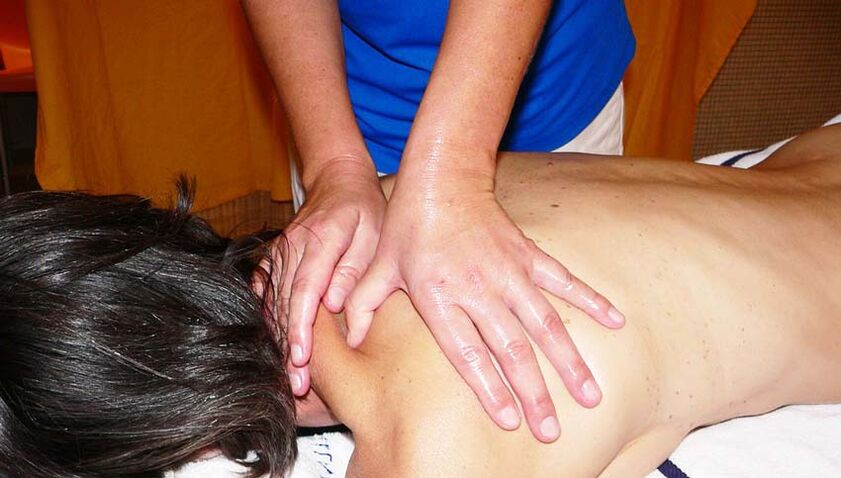
Massage for cervical spine osteochondrosis
In addition to general reinforcement classes, an excellent effect is to massage.Massage for cervical osteochondrosis can be used by different (classic, segments, points).In some cases, a combination of various techniques in one session is allowed.
We must not forget that massage with cervical osteochondrosis is carried out on a solid surface, facing down and the duration can vary from ten or more sessions.The frequency of repetition of the course is also determined by the attending physician.Massage efficiency will last longer if the patient sleeps on a good pillow.
Physiotherapy procedures as magnets or electrophoresis have local irritating effects.Magnetotherapy is a non -painful procedure that adults and children are well received.Manipulation lasts a few minutes, the patient should lie down, so older patients are most often recommended.
Electrophoresis is a manipulation that is carried out using a special device.During the procedure, the patient feels a small amount of tingling, which is made using the current.The frequency and impulsiveness of the signal for each age are on their own. With the help of this technique, the introduction of the drug is performed, which has a positive effect.This manipulation is more aggressive than magnetotherapy, so there should be strict indications for its implementation.
With the help of this technique, the introduction of the drug is performed, which has a positive effect.This manipulation is more aggressive than magnetotherapy, so there should be strict indications for its implementation.
A balanced diet is very important in the disease.Patients are recommended to eat fruits, vegetables, meat, vegetables, fish.The use of salt and all kinds of spices, seasonings, smoke or fried products, sugar should be limited.It is best to drink decoctions and plant tea, it is advisable to avoid the use of coffee and alcohol.
The use of traditional medicine is intended to reduce pain.Often, compression and mixture are used, which is focused on the damage area.Success in the treatment of cervical spinal osteochondrosis largely depends on the patient's awareness.Do not remove classes and therapies, as soon as you feel better.It is irrational to always use painkillers that carry temporary relief, and the disease itself is not treated.

























